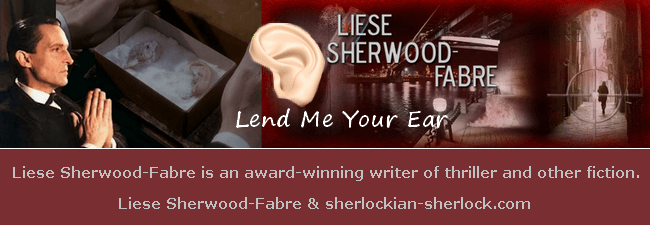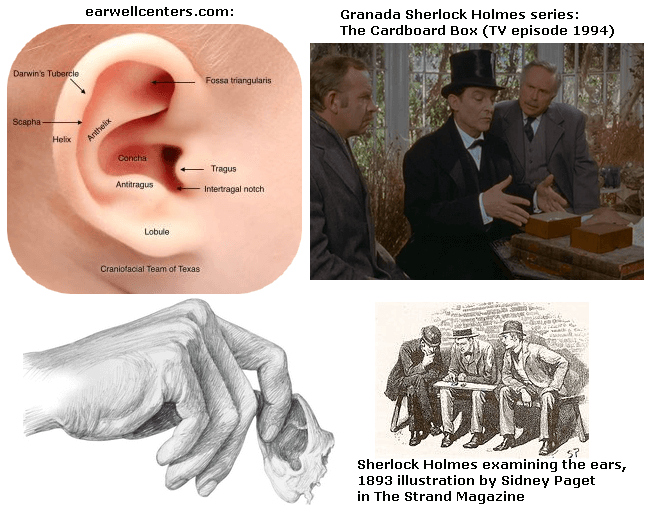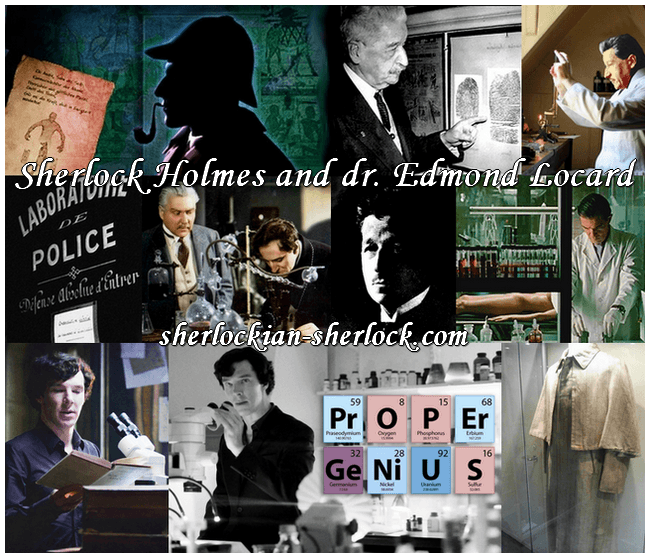SHERLOCK HOLMES - LEND ME YOUR EAR


Author: Liese Sherwood-Fabre, award-winning writer

In “The Adventure of the Cardboard Box,” Holmes tells Watson, “[T]here is no part of the body which varies so much as the human ear.” At the same time, after an examination of the ears sent to Susan Cushing, he discovered one corresponded “exactly” to that of their recipient. While not as well-known or used as fingerprints, ear prints have been used to establish a suspect’s presence at a crime scene because they are unique to the individual, despite the Cushing sisters’ exact match in Holmes’ observation.
The pinna, or auricle, is the visible part of the ear and includes the following parts that vary from person to person (1):
• The Helix—the upper curved area
• Darwin’s Tubercle — a thickening of the helix where the auricle’s upper and middle thirds meet in a portion of the population, noted by Darwin as inherited from primate ancestors
• The Antihelix — the curved cartilage ridge that runs parallel to the helix within the ear and divides into
- The Triangular Fossa—an indentation near the head created by the two legs of the antihelix
- The Superior crus of the antihelix
- The Inferior crus of the antihelix
• The Scapha — the depression between the helix and the antihelix
• The Crux of the Helix—the upper ridge of cartilage surrounding the entrance to the inner ear
• The Incisura Intertragica—the indentation formed by:
- The Tragus — the cartilage protruding from the head in front of the inner ear
- The Antitragus — the protrusion at the end of the antihelix
• The Lobule, or Earlobe—the cartilage-free end of the ear. This portion of the ear may be attached or unattached to the head.

Certain characteristics of the pinna are inherited. For example, approximately forty-nine genes affect whether earlobes are attached or unattached. (2) Prominent, or protruding, ears, which occur due to a lack of cartilage or malformed cartilage, are also inherited. (3) Additional research has confirmed the following generalizations about ear shape: men’s ears are larger, ears continue to grow in length and width as we age, the left and right ears tend to be symmetrical, and the overall size of ears vary according to ethnic groups. (4)
Holmes, of course, was interested in the shape of the three Cushing sisters’ ears, and his observation they were all the same does not hold up under research. A study of the ears of more than 400 subjects from three generations found similarities were never 100%. Even the one set of twins in the study did not have exact-matching ears, although they had more similarities than any other siblings. A comparison of grandparents’ and grandchildren’s ears was found to match the least, and the non-twin siblings had more similar traits than any other pairings, but still showed enough variation to identify a single individual. (5)
The uniqueness of ear prints has been equated with those of fingerprints—only changing less over time. Ears produce fat and wax secretions that leave behind a print when pressed to a surface, just as oils and dirt leave prints from fingers. Such impressions, usually found where a person presses his/her ear on a window or door to check for sounds, have been used since the 1950s to link a suspect to a crime. (6) The first case of a murder conviction using ear prints occurred in England in 1998. (7)
Ear individuality does not end with external structure. Each person’s ear processes quiet sounds differently. While not audible to the human ear, the microscopic cells in the inner ear’s cochlea vibrate, producing a noise detectable with sensitive microphones. These “octoacoustic emissions” are unique to the individual. NEC has already developed a microphone that can identify individuals from these sounds with 99% accuracy. (8)
Holmes’ scrutiny of one of the severed ears and that of the eldest Cushing sister indicated the fate of the youngest. While they might not have been duplicates, current research suggests they would have been similar enough to indicate a close relationship between Susan Cushing and the victim. Almost one hundred years would pass before such an observation was scientifically verified. Holmes had, once again, anticipated later forensic science.
Book three of “The Early Case Files of Sherlock Holmes” by Liese Sherwood-Fabre is now available at all major booksellers. Sherlock has only a week to prove a death is murder and not suicide and save Mycroft’s reputation in “The Adventure of the Deceased Scholar.” You can find it here: books2read.com/u/3LYAYw
More information about Liese Sherwood-Fabre:

Resources:
1) https://www.earwellcenters.com/congenital-ear-deformity-microtia-and-anotia/
2) https://www.nature.com/articles/d41586-017-07792-7
3) https://patient.info/doctor/prominent-ears
4) K. Skaria Alexander et al, “A morphometric study of the human ear,”
Journal of Plastic, Reconstructive, and Aesthetic Surgery, 2011: 64, pages 41-47.
5) Ruma Purkait, “Application of External Ear in Personal Identification:
A Somatoscopic Study in Families,” Annals of Forensic Research and Analysis, May, 2015.
6) Nitin Kausal and Purnima Kausal:
Human Earprints: a Review in Journal of Biometrics and Biostatistics, 2011, 2:129.
7) https://hearinghealthfoundation.org/blogs/ears-the-new-fingerprints
8) https://www.bbc.com/future/article/20170109-the-seven-ways-you-are-totally-unique
Thank you very much for this article Liese Sherwood-Fabre.

Recommended article:

Edmond Locard and Sherlock Holmes
|












